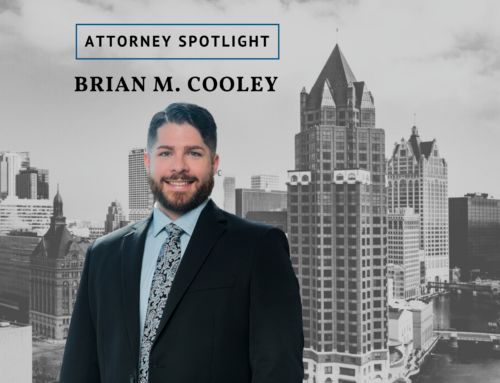Selling a home in 2023 is unlike selling a home in any year of recent memory. The majority of homeowners have mortgages with interest rates below 6.0%, and nearly a quarter have mortgages with interest rates below 3.0%. While interest rates may only be one factor when deciding to sell a home, it does not help homeowners who have to contend with the highest average home values in U.S. history.
Some homeowners have the ability to wait for conditions to change, however, for those who decide to sell their home, the tax code may help alleviate financial pressures.
IRC 121 – Exclusion of Gain from Sale of Principal Residence
A taxpayer’s principal residence is a capital asset that may produce capital gain upon a sale or exchange. However, Internal Revenue Code Section 121 could allow taxpayers to exclude a portion of such gain if certain conditions are met. Generally speaking, taxpayers may be able to exclude up to $250,000 of gain (or $500,000 for certain married taxpayers) from the sale or exchange if during the preceding five-year period from the date of the sale or exchange, the taxpayer owned and used the home as their principal residence for a period of at least two years.
But what exactly does a “principal residence” mean? While it is not precisely defined, Treasury Regulations indicate that facts and circumstances inform what is considered a principal residence. Important facts or circumstances could include the taxpayer’s place of employment or where the taxpayer chooses to principally raise their family. This means that a standard home, house trailer, houseboat, or even the stock held by a tenant stockholder in a cooperative housing corporation could be considered a principal residence.
If the gain exclusion is limited to $250,000 (or $500,000 for certain married couples), how exactly is that gain calculated? The gain from a sale or exchange is calculated by subtracting the homeowner’s basis in the residence from the sale price. If the sale price is greater than the homeowner’s basis, the excess is realized gain. A homeowner’s basis in the residence is the amount they paid for it, in addition to improvements that prolong its useful life or adapt it to new uses. These types of improvements could include additions or a new heating/cooling system. However, if the taxpayer utilized a credit for installing improvements, such as an energy efficiency credit, the amount of such credit may not be used to increase the homeowner’s basis.
If a taxpayer has realized gain, they would then need to satisfy the “Ownership Test” in IRC Section 121. A taxpayer must own the principal residence for either 24 full months or 730 days in the preceding five-year period from the date of the sale or exchange. The time period can be nonconcurrent (meaning it does not need to be a single, unbroken period) as long as it is within the preceding five-year period.
If the taxpayer satisfies the Ownership Test, how does the taxpayer satisfy the “Use Test” in IRC Section 121? A taxpayer may satisfy the Use Test by physically occupying the residence for at least two of the preceding five years. This does not mean they cannot leave the residence, in fact, short, temporary absences may still count towards the period of use. Treasury Regulations use an example of a homeowner leaving their residence for a 2-month vacation and the IRS still counting that period of time towards the period of use.
If the taxpayer has satisfied the Ownership and Use Test, how often can they take advantage of the exclusion? While it is unlikely taxpayers will be frequently uprooted from their principal residence, the gain exclusion in IRC Section 121 may only be claimed once every two years.
How do taxpayers qualify for gain exclusion of up to $500,000? A taxpayer may qualify for the higher gain exclusion when (or if) the married couple file a joint return, either spouse meets the two-year Ownership Test, both spouses meet the two-year Use Test, and neither spouse used the gain exclusion within the last two years.
What if a taxpayer doesn’t meet all of the conditions in IRC Section 121—can a taxpayer qualify for a partial exclusion? There are circumstances that allow a taxpayer to qualify for partial gain exclusion. These circumstances include a work-related move, a health-related move, “unforeseeable” events, or other facts and circumstances. A work-related move requires taking a job or being transferred to one that is at least 50 miles or farther from the home than one’s old work location. A health-related move requires one to move due to obtaining or providing medical care for oneself or a family member. An unforeseeable event includes incidents such as the destruction or condemnation of one’s home.
If a taxpayer satisfies one of these circumstances, they may calculate the amount of gain exclusion by multiplying the entire gain exclusion against the amount by which they meet the Use and Ownership Tests. In other words, if the taxpayer only owned and used the principal residence for 12 months, they would only qualify for $125,000 of gain exclusion.
However, the partial gain exclusion is just of many nuances to IRC Section 121.
Conclusion
When it comes time to sell a home, taxpayers are not likely to consider how the tax law can be a positive factor to such a personal decision.
However, as interest rates keep more and more taxpayers feeling like they cannot move, it is important to remind individuals of ways the Internal Revenue Code can work in their favor. If a taxpayer meets the conditions set forth in IRC Section 121, a taxpayer may be able to positively leverage the sale or exchange of their home at a time when home prices are historically elevated.






